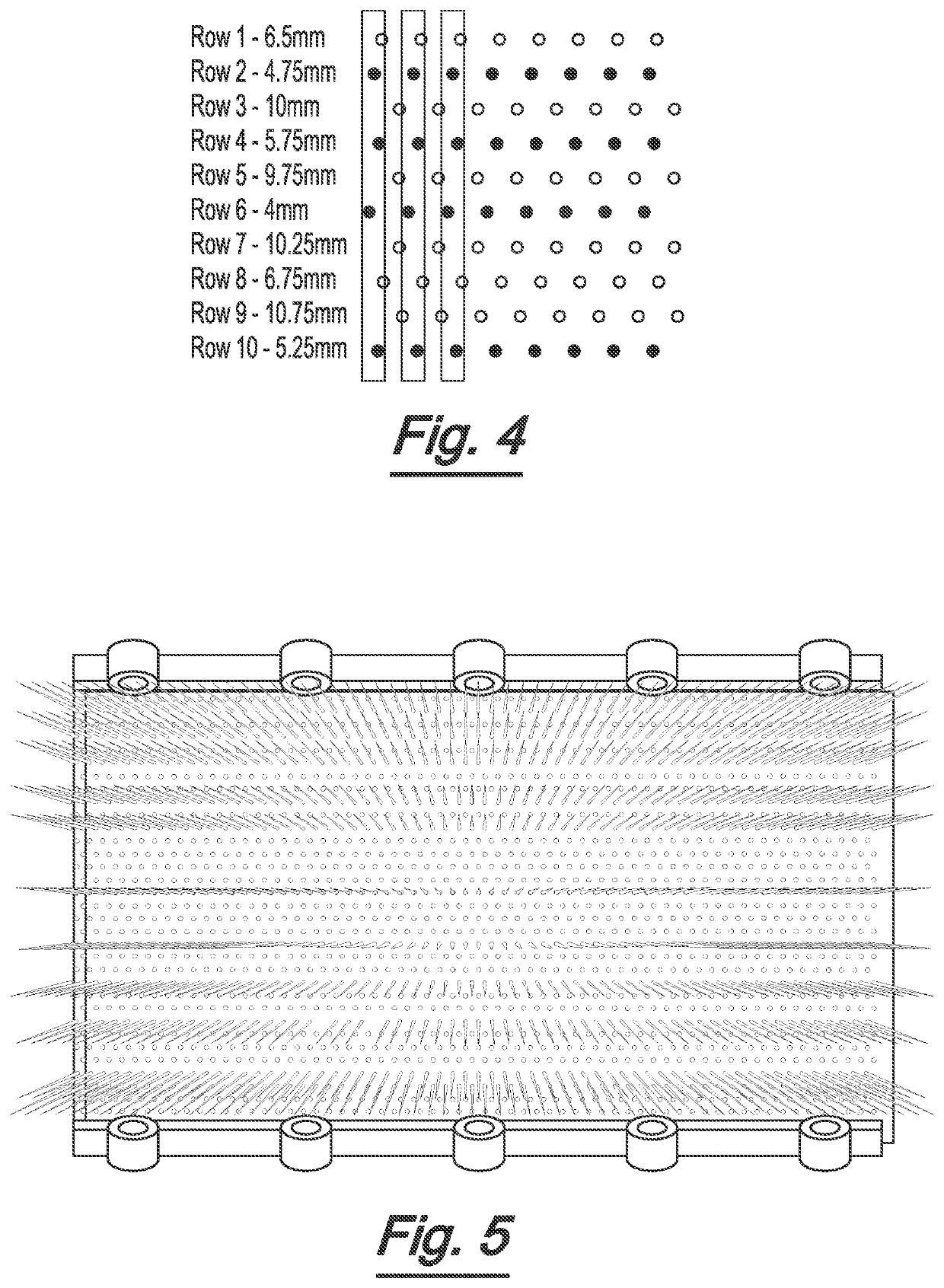Nonwoven fabric
a non-woven fabric and fabric technology, applied in the field of non-woven fabrics, can solve the problem of inacceptable weight increas
- Summary
- Abstract
- Description
- Claims
- Application Information
AI Technical Summary
Benefits of technology
Problems solved by technology
Method used
Image
Examples
example 1
[0079]Needleloom NL1 was set-up so that needles were only present in the following 6 rows 2, 6, 12, 17, 24 and 28 (all needles in any one of these rows being present).
[0080]The unbonded fabric (weight 200 g m2) was passed through the needling line which was operated with the following conditions:
[0081]NL1 used a penetration depth of 7 mm at speed of 200 punches / cm2.
[0082]NL2 used a penetration depth of 4 mm at speed of 40 punches / cm2.
[0083]The resulting fabric had stripes of needling with a width of 1.25 mm and with a spacing of 8 mm between the centrelines of the stripes.
[0084]Properties of the bonded fabric were as follows:
[0085]Absorbency=33 g / 100 cm2,
[0086]Dry Strength=3.0 N / cm, and
[0087]Wet Strength=1.5 N / cm.
example 2
[0088]Needleloom NL1 was set-up so that needles were present in all apertures of the following 8 rows 2, 6, 10, 12, 17, 24, 28 and 29. This was to give a pattern of 1.75 mm stripes having 8 mm spacing between their centrelines. This was 2 additional rows compared to example 1.
[0089]The unbonded fabric (weight 200 g m−2) was passed through the needling line with NL1 operated to provide a penetration depth of 7 mm at speed of 200 punches / cm2.
[0090]The parameters of NL2 were varied using a combination of penetration depths of 2, 4 and 6 mm, each with a speed of 40, 60 and 80 punches / cm2, thereby providing a total of nine samples, for which the properties (taken overall) were as follows:
[0091]Absorbency=33-40 g / 100 cm2,
[0092]Dry Strength=1.2-3.7 N / cm, and
[0093]Wet Strength=1.2-3.2 N / cm.
example 3
[0094]Needleloom NL1 was set up so that needles were present in following 10 rows 2, 4, 6, 10, 12, 17, 21, 24, 28 and 29. This was to give a pattern of 2.25 mm stripes having 8 mm spacing between their centrelines. This was an additional 2 rows compared with Example 2.
[0095]The needle line was operated with the following conditions:
[0096]NL1 used a penetration depth of 7 mm at speed of 200 punches / cm2.
[0097]NL2 used a penetration depth of 2 mm at speed of 80 punches / cm2.
[0098]The strength of the web was, according to a subjective assessment, considered to be sufficient.
PUM
| Property | Measurement | Unit |
|---|---|---|
| width | aaaaa | aaaaa |
| transverse distance | aaaaa | aaaaa |
| length | aaaaa | aaaaa |
Abstract
Description
Claims
Application Information
 Login to View More
Login to View More - R&D
- Intellectual Property
- Life Sciences
- Materials
- Tech Scout
- Unparalleled Data Quality
- Higher Quality Content
- 60% Fewer Hallucinations
Browse by: Latest US Patents, China's latest patents, Technical Efficacy Thesaurus, Application Domain, Technology Topic, Popular Technical Reports.
© 2025 PatSnap. All rights reserved.Legal|Privacy policy|Modern Slavery Act Transparency Statement|Sitemap|About US| Contact US: help@patsnap.com



